Star dots
A solution for representing 5-based rhythmic notation
In Western music notation, note durations are multiples and divisions of 2: whole, half, quarter, etc. We have a simple syntax - the dot - for extending the duration of a note or rest by 1/2 the duration of itself. Using just our regular note types and the dot, we can describe notes with durations in multiples of 1, 2, 3, 4, 6, 8. By using a “double-dot”, we can describe a note with a duration of 7 rhythmic subdivisions.

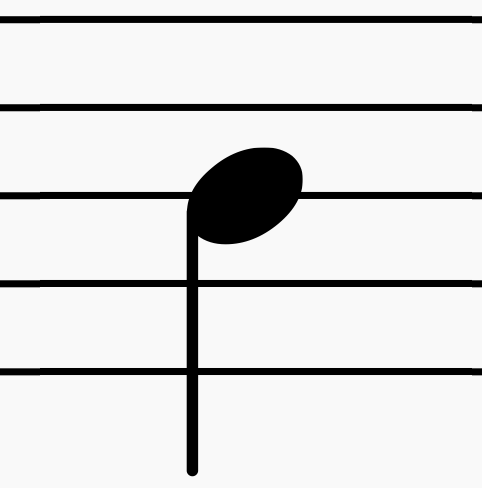
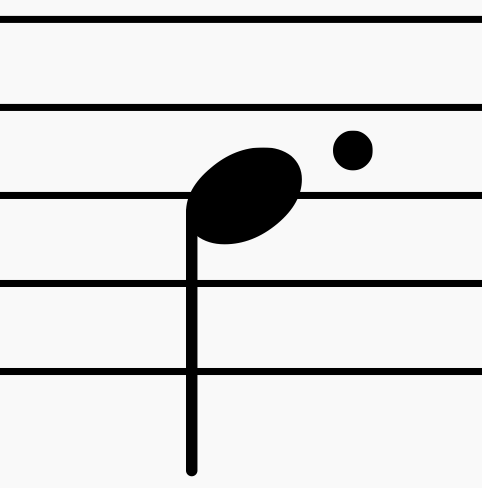


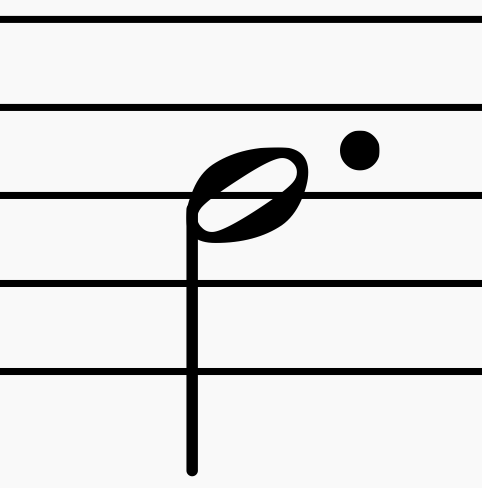


Conspicuously absent in our notation system is a succinct way to represent a note (or rest) that has a duration of 5 rhythmic subdivisions. The composer is expected to use a laminate of two notes tied together, e.g. in couples of 3 + 2, or 4 + 1. In music that has a 5-fold meter or a time signature in a multiple of five (like 5/4 or 10/8), this is neither practical nor appropriate.
To represent a note that has a duration of 5 subdivisions, I propose using the 5-pointed star. It uses the same syntax as a dot.




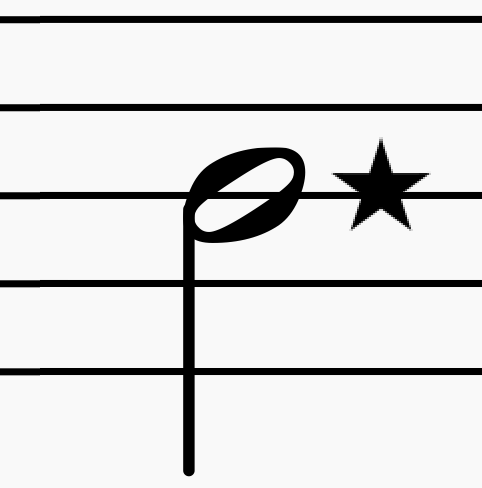



Duration Equivalents
A star-dotted note or rest is extended in duration by one quarter of itself. Simply put, it turns a duration of 4 into a duration of 5.
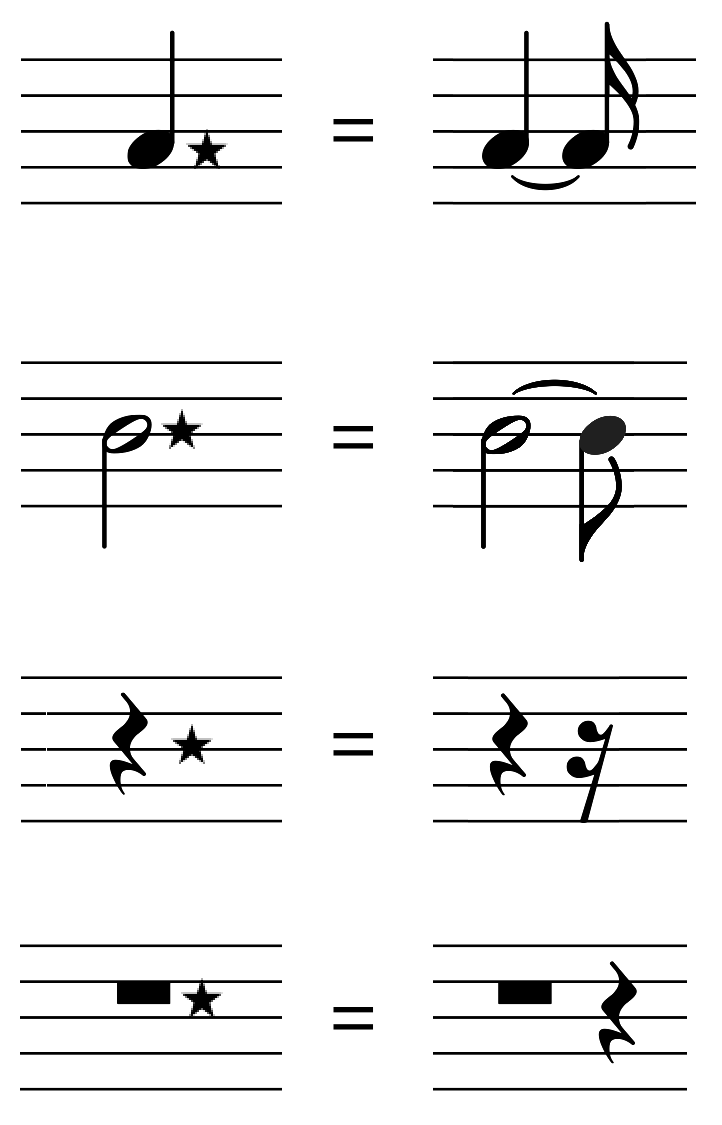
Where to get the glyph
Transparent PNG
Suitable for use in any notation program that allows placement of graphic images. This is a high-resolution PNG far larger than is necessary for perfect aliasing at even an extremely high resolution.

Vector SVG
Suitable for use in any notation program that allows placement of vector shapes. This vector shape will resize to any dimensions and will look perfect at any size, no matter what the resolution.
Unicode Character
The black 5-pointed star is a common symbol named "BLACK STAR" already included in many commercial fonts. Its Unicode address is U+2605.
★
Usage
Here are three different ways to render measure 21 from Lovers, the 7th movement of Opus Arcana, whose beginning and end sections are in a 10/8 time signature. The first two examples split the 5-beat rest and note into separate entities using ties, whereas the third uses the simplified star syntax.



Never use stars for syncopation!
In order for syncopated rhythm to be legible, you do not use a dotted note to extend a note duration across a meter boundary. For the same reason, you must never use a starred note instead of a tied note for syncopation.
Do this:

Don't do this:

Stars and dots are exclusive; they must never be combined as alterations of the same note. Double-stars, which would extend a duration by a quarter and then by a sixteenth of itself, are technically possible but unlikely to be useful and are almost certainly a sign of malice.
Placement and syntax
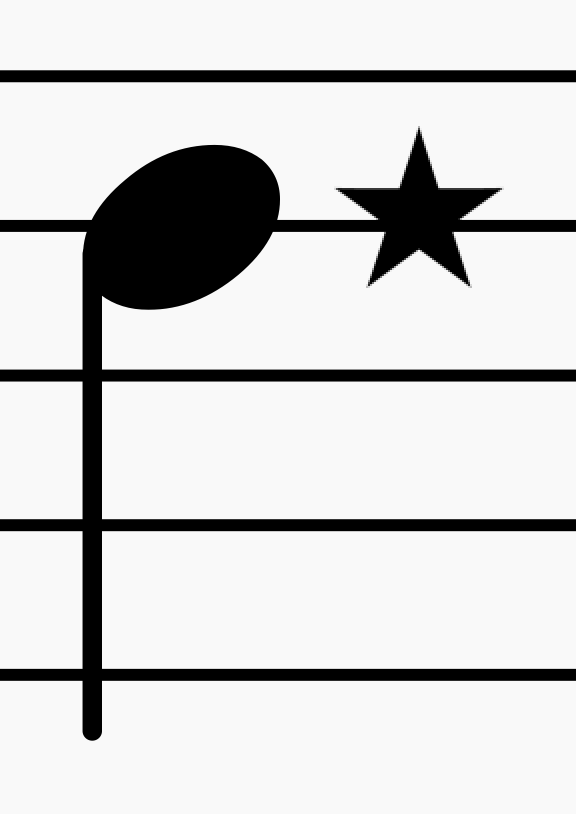
Unlike a dot, stars can align with staff lines, and are not moved up to the nearest space. When the star appears beside a note head on a line, the star intersects the line across its two lower concave points. The staff line bisects the star at its narrowest point, and the actual center of the star is slightly above the line.
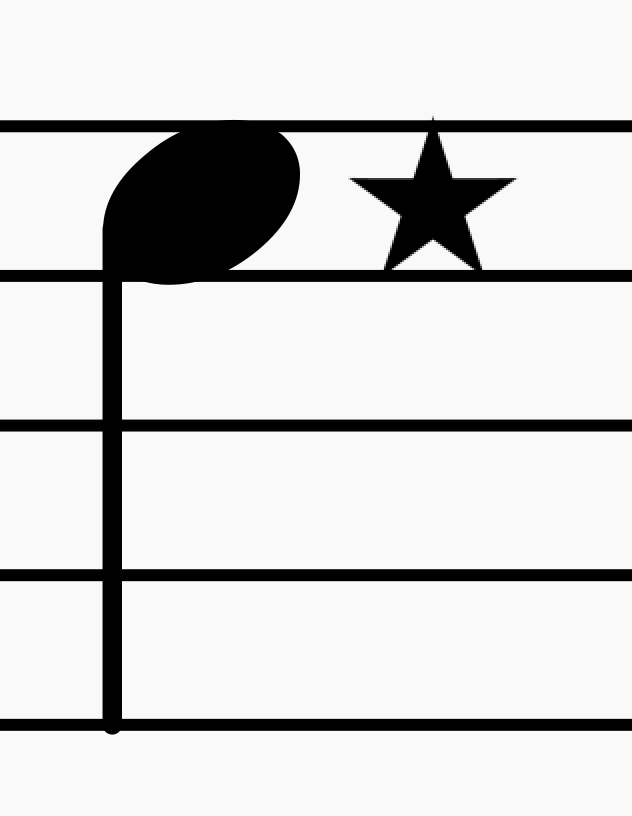
When the star appears beside a note head on a space, the star occupies the same vertical span as the note head. The top point touches the line above, and the bottom two points touch the line below.
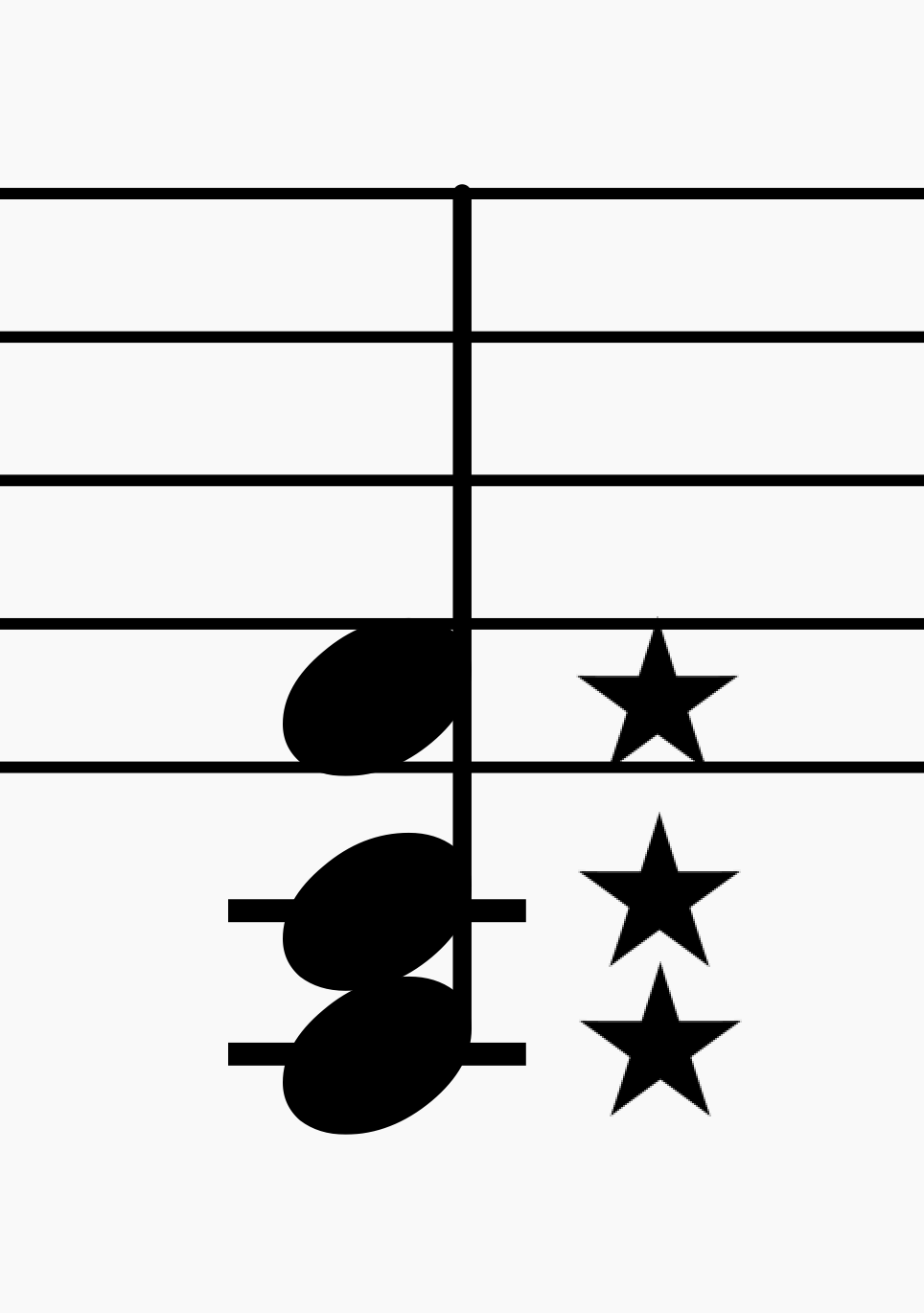
Chords require multiple stars, the same as dots. Stars should all be aligned vertically. A chord may have a mix of stars aligned with lines and spaces, as long as they are spaced apart by at least one line-height. Stars must never overlap.
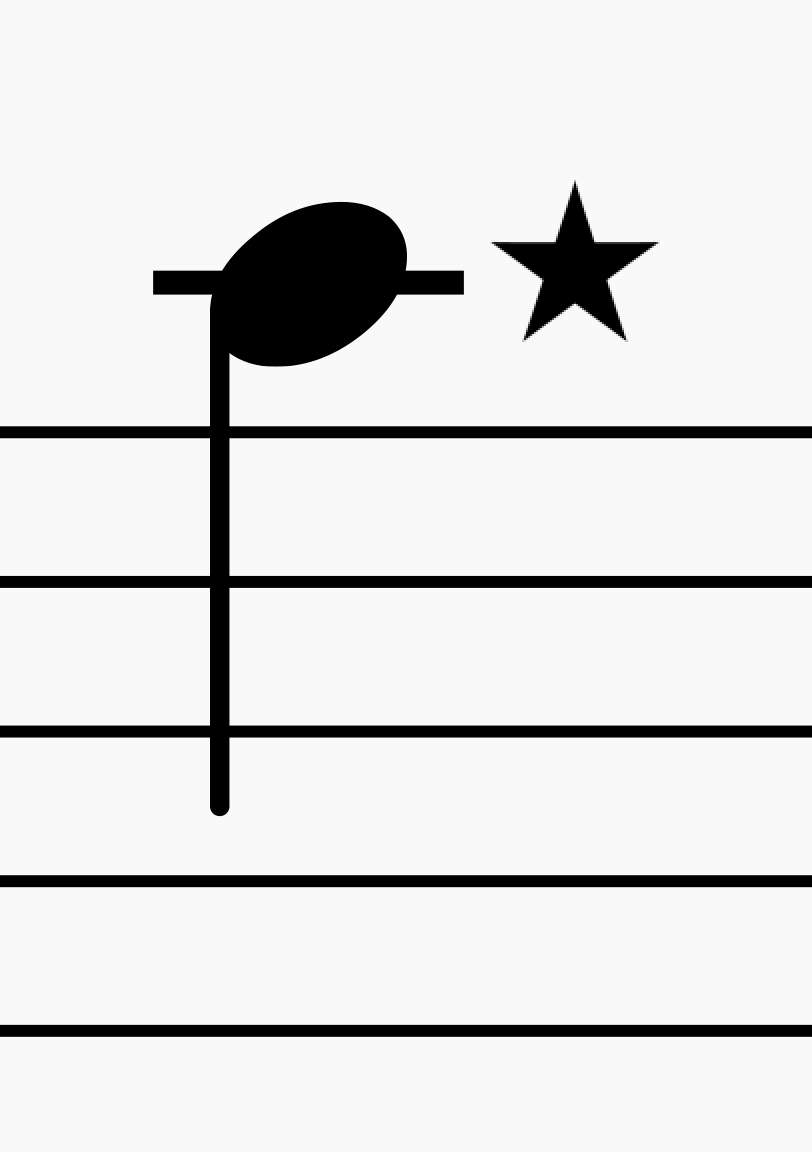
Stars align with leger lines the same way as they do on the staff
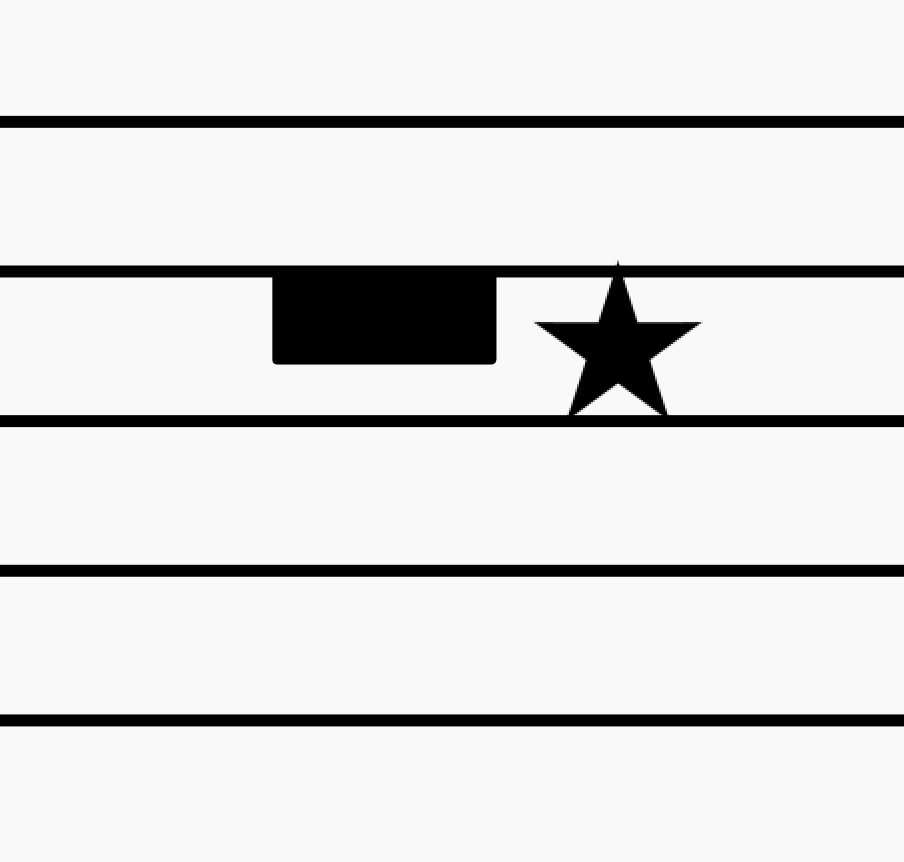
Starred whole rest is aligned with the space
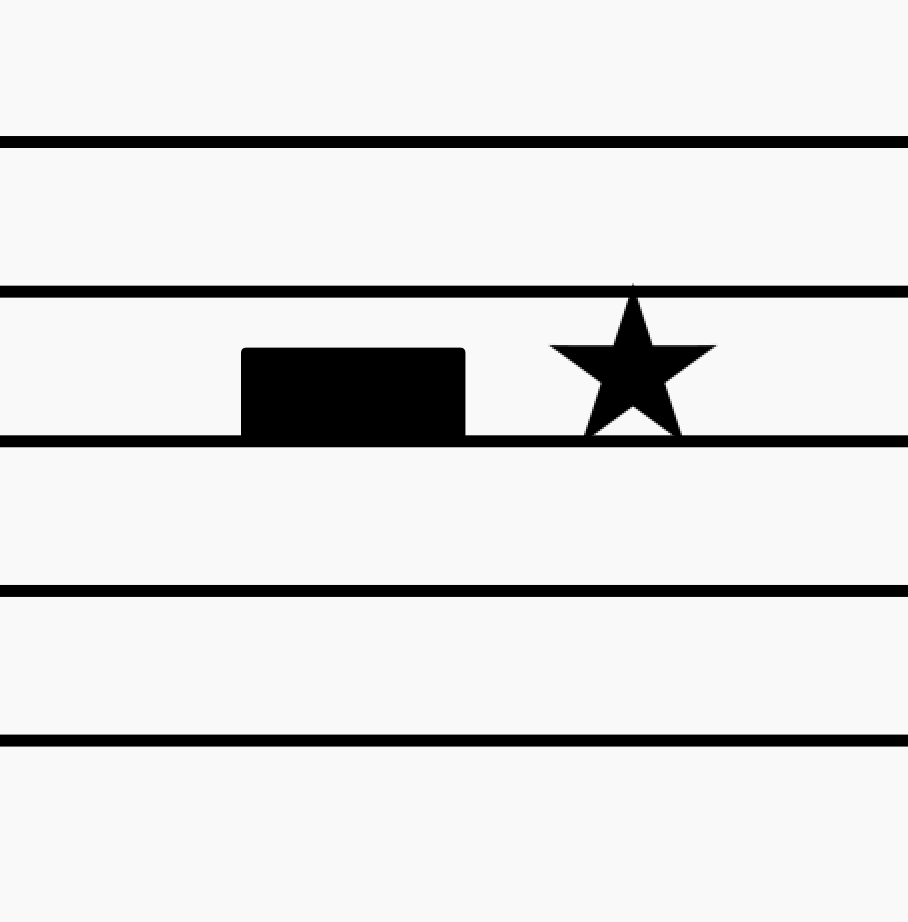
Starred half rest is aligned with the space

A star beside a quarter rest is aligned with a line
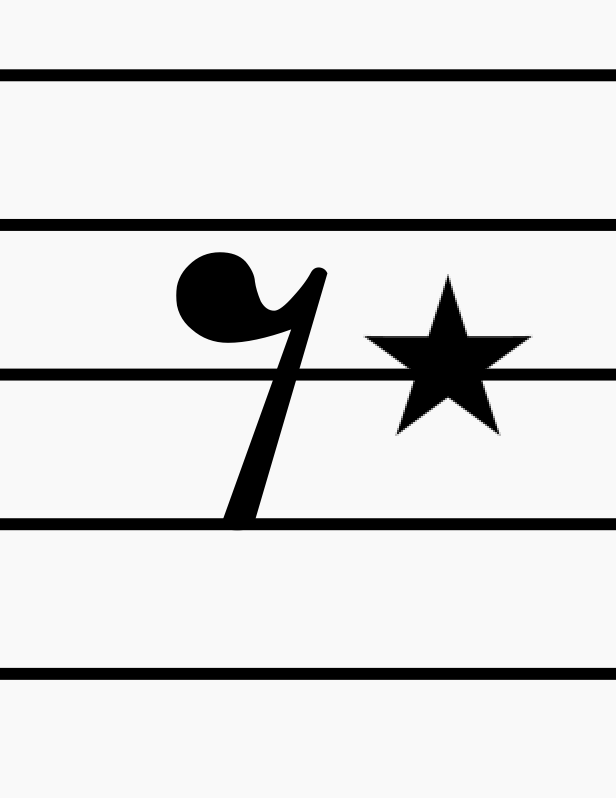
Starred eighth rest is aligned with the line

Starred sixteenth rest is aligned with the line
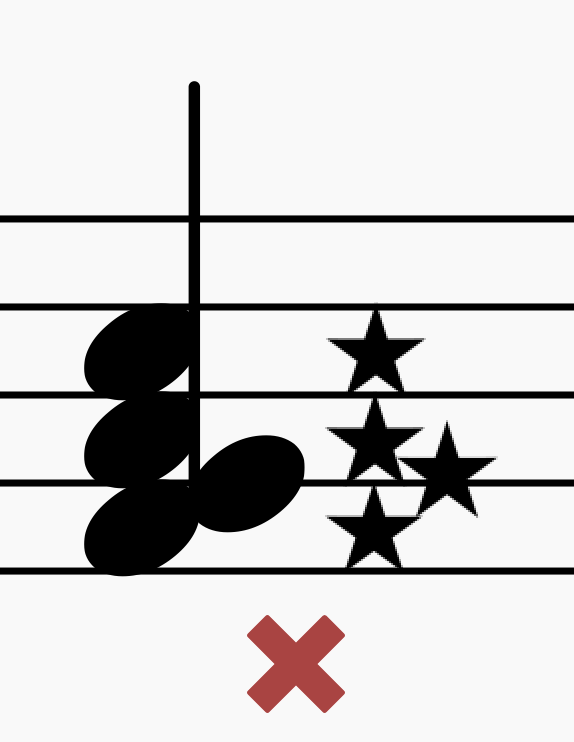
Never stagger stars on lines and spaces like this. Stars beside a chord must be vertically aligned.
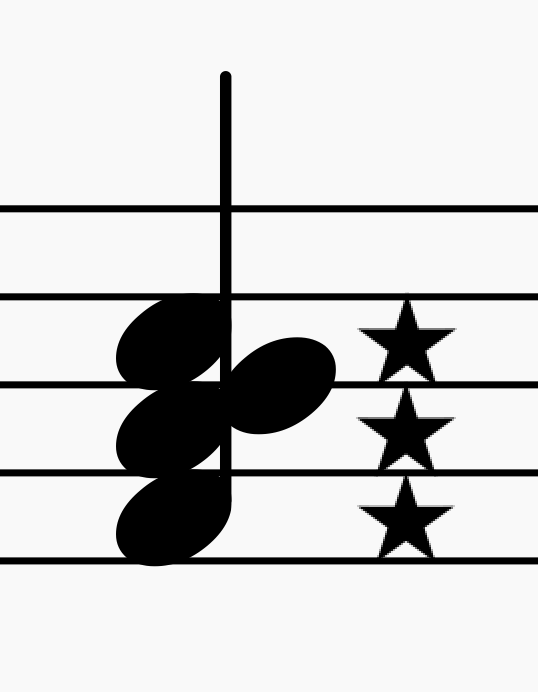
If the star beside a note on a line would overlap with another star, move it up to the space above. If that occupies the same place as another star, then the one star will suffice for both notes. This means clustered chords will have stars in the spaces, but not on lines.

Since the star for the topmost note would overlap the star below it, it is moved up to the next space.
Software Integration
Help is needed to create open-source plugins for all the major music notation software packages. If you have expertise in creating software plugins for these apps, please contribute!
Other possibilities
Star Dot notation was first revealed to the public on June 2, 2016. But it is hardly the first time such a notation has been proposed. Here are some other proposed solutions for quintuple duration:
-
Prolific Finnish composer Einojuhani Rautavaara used an "x" symbol to the right of the notehead. This has the advantage of being syntactically similar to a regular augmentation dot. It has been criticized for the "x" looking similar to a double-sharp, but in practice is only a problem when in close proximity to other notes.
- First known use: Einojuhani Rautavaara, "Vigilia" (1971) ISBN-13 978-9517575645 pub: Boosey & Hawkes, via Amazon. watch and listen: the notation appears at 17:12. see example.
-
Honorary mention: Conrad Asman used Rautavaara's "x" symbol, combined with a regular augmentation dot to represent 13/16. First known use: "Piccolo Concerto" (2022) see example
-
Louis Andriessen sought to solve this problem by removing the modifier dot from the notehead, and put to the right of the stem, aligned with the top of the stem.
- First known use: Louis Andriessen, "Trepidus" for piano (1983) Boosey & Hawkes. score video, example and explanation.
Avant-garde American composer George Crumb published scores in which a quintuple duration was notated with one dot to the right of the notehead, and another dot to the left. This notation was never well documented, but it was assumed that the posterior dot added a half-duration, while the anterior dot subtracted a quarter-duration. This notation has gained some fans, but is criticized because the anterior dot interferes with accidentals and ties, plus when in proximity to other notes it can look like the dot belongs to a different notehead. Matthew Saunders (see below) reports that this notation was also used by composer Frederic Anthony Rzewski (citation needed).
- First known use: George Crumb, "Zeitgeist - IV. Day Of The Comet" (1988) pub. Edition Peters, SKU 1646524 Boosey & Hawkes
-
Composer and percussionist Stuart Saunders Smith has pushed many boundaries of notation. In his score for "THAW", it is reported that a quintuple duration is notated with a non-filled circle. [citation needed]
- First known use: Stuart Saunders Smith, "THAW" (2005)
Matthew C. Saunders, associate professor of music at Oklahoma Panhandle State University, suggests putting a slash through the notehead or rest, or superimposing a circle over the notehead or rest. Read more about this. Archive, retrieved 2025-04-09.
Another notation (reported by participants in the MET group, but without any examples or citations) is the use of a "+" symbol. If it is syntactically similar to an augmentation dot, then this glyph has similar advantages to Rautavaara's "x", but there are as of yet no known examples of a "+" being used in published material.
Hudson Flavio Meneses Lacerda invented a very elegant system in June 2019. He recognized that the traditional augmentation-dot positions are essentially binary digits, where an ON bit "1" is represented by a dot "·". The first position represents 1/2, the second position 1/4, then 1/8, and so on proceeding in powers of two. To achieve other fractions besides reciprocal powers of two, we merely need a symbol to represent an OFF bit "0", for which he suggests a slash "/". This system is backward-compatible in that all existing augmentation dots still mean what they mean, eg 3/8 is (♩·) and 7/16 is (♩··), but it allows previously impossible fractions like 5/8 (♩/·), 9/16 (♩//·), 11/16 (♩/··) and 13/16 (♩·/·) . Hudson suggests that the star-dot could be an abbreviation (and mnemonic) for "/·".
Published Examples
Published works that have used star dots include:
- Ian Ring - Opus Arcana, III. Empress
- Ian Ring - Opus Arcana, VI. Lovers
- Ian Ring - Opus Arcana, XVII. Star
Have you used star dots in published works? Let the author know so it can be added to this list.